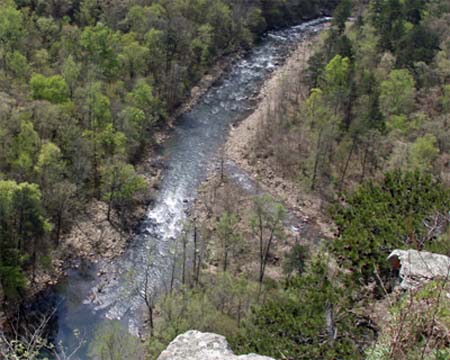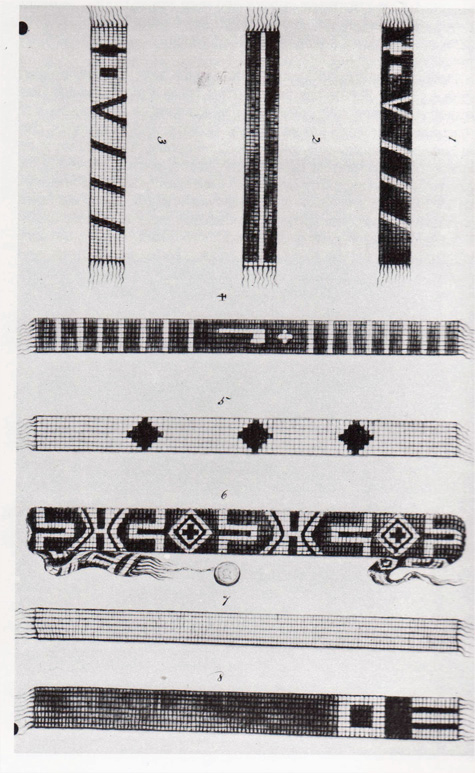 |
 |
Photographs (left to right): Joshua Tree National Park, CA: Wakullala Springs. FL; Little River Canyon Fort Payne, AL
Wampum Belts With Provenience Archive
Huron 8 Nations Peace and War Belts
(Drawing)
Courtesy Museum of Victoria, Melbourne, Australia

Drawing by Russ McCord 1895

Huron "8" belt partial Musee de la civilisation

Reproduction (Hamell 5/26/2014)
Original Size: |
none given |
Reproduction: |
Beaded length: 19.5 inches by 4.0 inches. Length w/fringe: 29.5 inches |
Beads: |
Length: 117 rows long. 8 rows wide: Beads: 936. |
Materials: |
Warp: leather. Weft: artificial sinew. Beads: Polymer. |
Description:
The drawing by Huyghes is inaccurate. He drew 8 belts at the Huron Council House at Lorette in 1848.
 |
Eight wampum belts drawn by S.D.S. Huyghes at the Huron Council House at Lorette in 1848 (Courtesy of the Museum of Victoria, Melbourne, Australia).The keeper of the belts explained that #1 was used to rally eight allied tribes for war, #2 symbolized an "open path" and was used to inaugurate a grand chief. #3 was a "pledge of peace with eight nations or villages", and #4 was a war belt. #6 was worn by the grand chief on state occasions, and #7 was used to make peace. (#5 and #8 were not explained (Glenbow Museum, 2010. p.84).Indiana University. 1988. The Spirit Sings: artistic traditions of Canada's first peoples: a catalogue of the exhibition. 156pp. |
|---|
The Huron Eight Nations War belt was drawn by S.D.S. Huyges at the Huron Council House at Lorette in 1848.
The drawing is currently in the Australian Museum in Melbourne. No other description was given.
Darren Bonaparte at Akwesasne, stated this belt and its counter were connected with the Seven Nations of Canada of which the Hurons of Lorette were a part. They were called the 8 nations at times, probably due to the creation of a new village at Akwesasne at the beginning of the Seven Years War.
There is a similar purple-fielded belt (below) believed to have allied the 8 Nations in war. A colleague noted the two belts are not an identical 'positive-negative' of each other. The white-field belt's first image is symmetrical was as the purple-field belt figure is not.
The quality of the drawing is rather poor to accurately count the columns of beads. A request to the Australian Museum for photographs and description of these belts has been submitted (June 1, 2014).
Jonathan Lainey stated the white-fielded belt (part of it) is currently in the Musee in Quebec (2004, pp. 130-133), The black-fielded belt is lost or location unknown.
The remnant of the white belt is not like the drawing by by David Ross McCord which are very detailed, the last bar is oriented differently. See Lainey (2004) pp. 175-177.
Reference:
Australian Museum Melbourne.
Bonaparte, Darren. 2014. Personal Communications.
 |
 |
 |
 |
 |
 |
 |
 |
|---|
